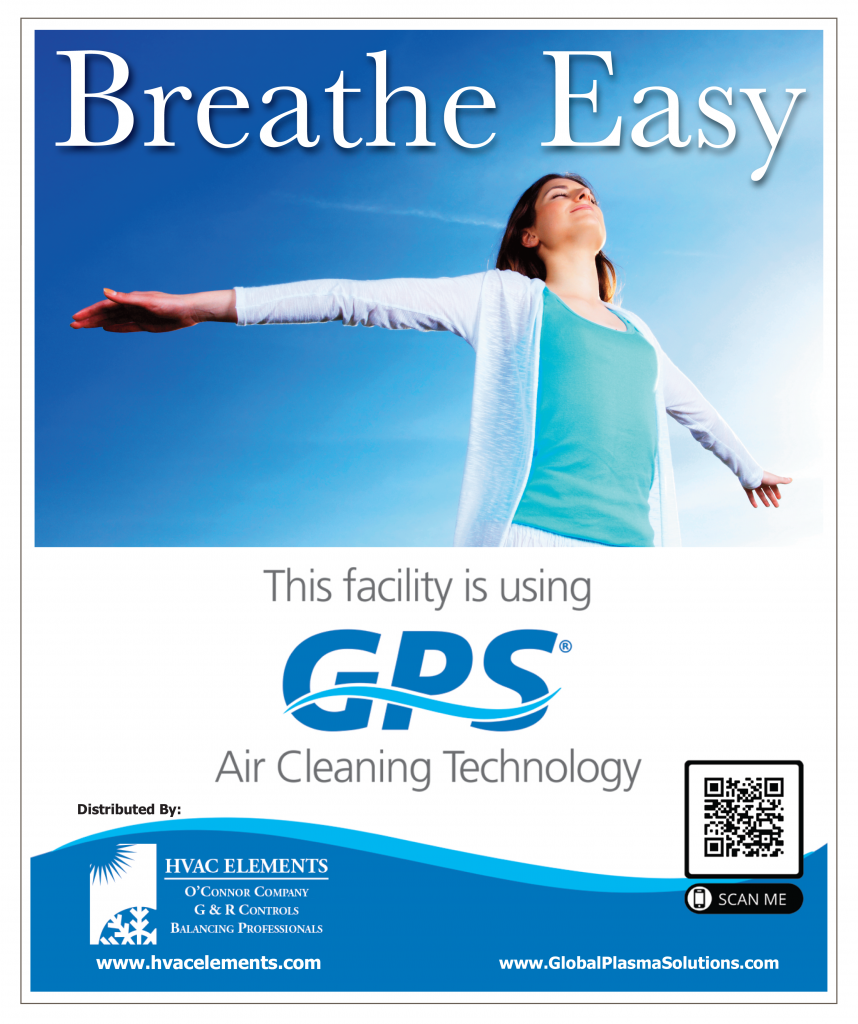As a hospital and healthcare provider, Orange City Area Health System (OCAHS) has long understood the importance of protecting patients, staff, and visitors from airborne pathogens. This past year has brought even more attention to this need because of the COVID-19 pandemic, and OCAHS added several effective tools to its arsenal to help kill the virus. The most recent is the installation of the Global Plasma Solutions (GPS) Needlepoint Bipolar Ionization (NPBI™) technology.
According to GPS, the patented NPBI technology produces a high concentration of positive and negative ions, delivering them to indoor spaces via the facility’s ventilation system. Within the air stream, ions attach to particles, where they combine, become larger, and are more easily filtered from the air. When ions come in contact with pathogens, they disrupt the pathogens’ surface proteins, rendering them inactive.
Studies have proven the ability of this technology to reduce the infectivity of certain viruses by 90 percent or more.
The NPBI system was installed at the health system’s Main Campus and at Prairie Ridge Care Center this past Spring, as OCAHS continued to invest in solutions to help protect against not only COVID-19 infections, but also to neutralize other viruses, allergens, and other airborne pathogens.
“This is a significant investment to help improve the health and safety of the communities we serve, as well as our staff,” commented Marty Guthmiller, CEO of Orange City Area Health System. “Breathing cleaner air is a great first step toward better health.”
In addition to the NPBI system, this past year Orange City Area Health System invested in Skytron UVC disinfecting “robots,” electrostatic cleaning systems, and also modified hospital rooms to be negative-pressure environments whereby air from the room is vented outside instead of back into the hallway. “With these improvements, combined with outstanding clinical care, our commitment to long-term solutions for ultimate patient, staff, and visitor health and safety remains a top priority,” remarked Guthmiller.

